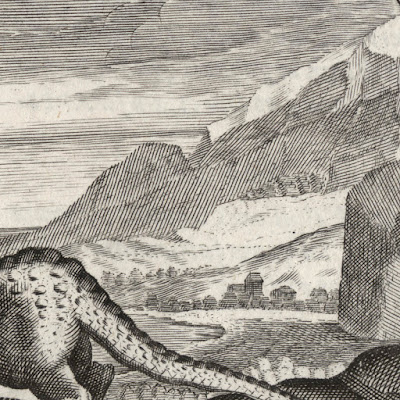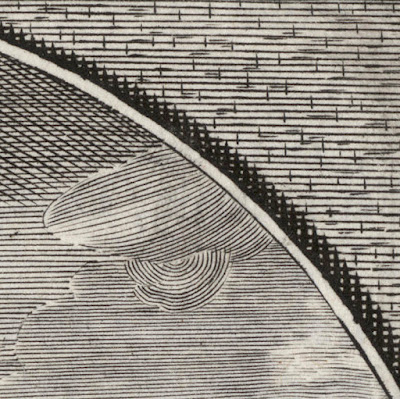Valentine Green (1739–1813)
“Samson Betrayed by Delilah”, 1793, after
the painting by Peter Paul Rubens (1577–1640),
“The Capture of Samson”, 1620, in the Staatsgalerie im Schloß Schleißheim (Old
Pinakothek), Munich, published by Valentine Green and his son, Rupert Green
(1767/8–1804), in London, as plate 269 in Pigage's Catalogue of the Düsseldorf
Gallery.
Mezzotint on laid paper with a small margin around the platemark.
Size: (sheet) 57.2 x 61.9 cm; (plate) 56.7 x 61.3 cm; (image
borderline) 52.7 x 60.7 cm.
Lettered below the image borderline: (left) “Painted by P.P. Rubens”;
(left of centre) “SAMSON BETRAYED BY DELILAH./ In
Monsr. Pigage's Catalogue of the Dusseldorf Gallery, this Subject is No. 269.”;
(centre) emblem of a crowned cartouche inscribed “CT” (probably the coat of
arms of Charles Theodore, Elector of Bavaria [1724–1799]); (right of centre) “SAMSON
TRAHI PAR DALILA./ Published Novr. 1. 1793 by V. & R. Green No.13 Berners
Street, London.”; (right) “Engraved by V. Green Mezzotinto Engraver to his Majesty
& to the Elector Palatine”.
State i (of ii) lifetime impression before the addition of “J. Daniel
& Co. Excud.” and the change of date to “March 25th 1799.”
Whitman 269 (Alfred Whitman 1902, “Valentine Green”, London, A H
Bullen, p. 169, cat. no. 269; see this catalogue online:
The British Museum offers the following description of this print:
“Samson being taken from Delilah by group of soldiers, Delilah on
couch, holding shears, being restrained by her servant”
Condition: richly inked and well-printed impression with a narrow
margin around the platemark. The sheet has minor scuffing (with some
retouching) and small restored tears to the margins, otherwise the print is in
very good condition for its age and huge size.
I am selling this first state, lifetime impression of this large and
spectacular mezzotint by one of the most famous mezzotinters of his time, for
the total cost of AU$544 (currently US$323.49/EUR297.90/GBP274.85 at the time
of this listing) including postage and handling to anywhere in the world (but
not, of course, any import duties/taxes imposed by some countries).
If you are interested in purchasing this
exceptionally beautiful mezzotint showing the Philistines entering Delilah’s
tent to capture Samson after she cut off his hair, please contact me
(oz_jim@printsandprinciples.com) and I will send you a PayPal invoice to make
the payment easy.
This print has been sold
























































